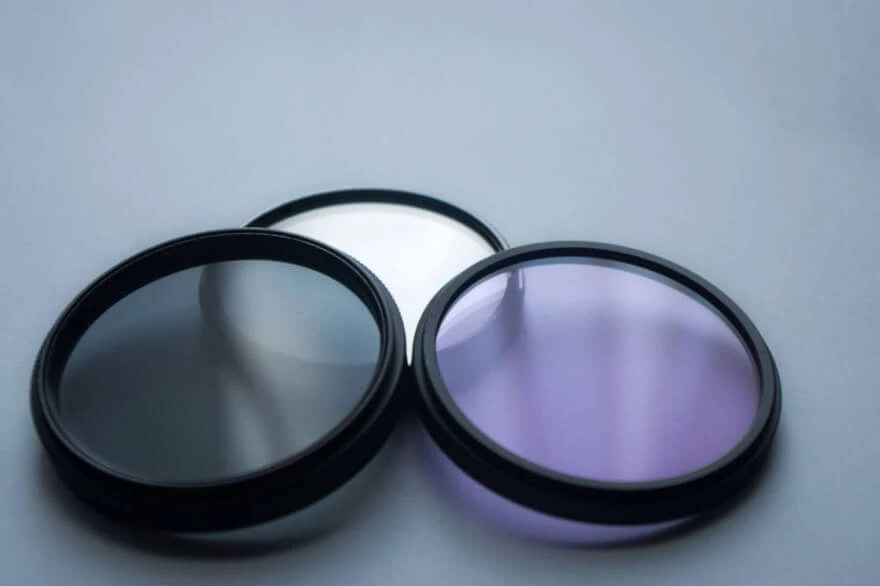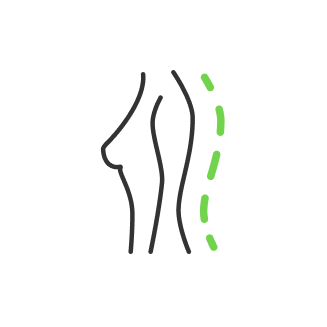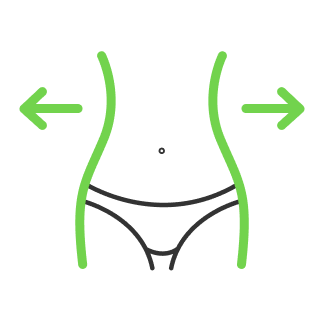Top 10 neutral density filters/ND filters

- What are ND filters and how do they work
- Variable and Fixed ND’s cons and Pros
- Easy way to define the number of stops
- Preparation
- Shutter speed relation
- Variable NDs advantage
- Filter name and brand
- B+W XS-Pro Digital ND Vario MRC-Nano (2-5 Stop Variable ND Filters)
- Haida NanoPro 1000X (10-Stop ND Filter)
- B+W ND110 (10-Stop ND Filter)
- Hoya ProND1000 (10-Stop ND Filter)
- LEE Filters Big Stopper (10-Stop ND Filter)
- Formatt-Hitech Firecrest ND 16 (4.5-Stop ND Filter)
- Recommended use cases
- Variable NDs and Fixed NDs for long-exposure photography
- Tiffen 77mm Variable ND Filter (2-8 Stops) for flexibility
- Nisi V5 Pro 100mm Filter Kit (Includes 10-Stop ND Filter)
- Freewell mini 3 pro for Quadrocopters and Air shots
- Conclusion
Shopping for a solid ND filter might be overwhelming as there are plenty of those to choose from. ND filters have been used both for photography and videography, and all of them are from different brands claiming to be high-quality and superior in one way or another. So, to make that decision easier for you and to not make you waste money trying all of them, we have done this already and gathered 10 best ND filters in this article, representing an aggregate of all the top-selling, highest-rated, solid NDs across B&G, Amazon, and Adorama.
What are ND filters and how do they work
Let us first have an understanding of how this piece of equipment works before diving into the list of the best.
The short explanation is that ND filters are like sunglasses for your camera. ND filters or neutral density filters are pieces of glass that you put in front of your camera lens to make the image darker. You can manipulate your light using your aperture, shutter speed, and ISO but having an ND filter gives on more function of control making your exposure triangle into an exposure square.

For video it allows you to keep your aperture where you want it for that shallow depth of field without having to adjust shutter speed from the optimal setting. For photography, it allows you to adjust the shutter speed for creative motion blur while again maintaining your aperture. However, there are different types of ND filters out there. There are fixed ND filters that offer a specific number of stops of darkening like PolarPro Quartzline filters that represent ND 16 with 4 stops and ND1000 with 10 stops. But sometimes fixed ND filters can be limiting, you need to have a whole set of them to make different darkness and it takes a lot of time to screw them on and off of your lens. That is where variable ND filters come in handy, and PolarPro has their Peter McKinnon variable ND available.
Variable and Fixed ND’s cons and Pros

Variable ND filters consist of two pieces of glass and the front one is rotatable. As you rotate the front piece the filter makes the image darker, hence the variable part of the variable ND filter. It is fairly obvious how convenient this can be by being able to screw on one filter and just twist it to change the light. However, fixed ND filters often produce better image quality because of the way that variable ND works with the two pieces of glass, even with some more expensive ones you can still get vignetting loss of sharpness and that crazy blacks if you push them too far. These are things that you don’t see on fixed NDs with a single piece of glass.
However, having a variety of top-quality fixed NDs may cost you a lot, because you do not want to put some cheap piece of glass in front of your top-notch lens. So it is good to have either a couple of super good variable ND filters of 2-5 and 6-9 stops or a set of fixed NDs of that range.
Easy way to define the number of stops

As we see both fixed and variable NDs have their cons and pros, but to reduce that influence we need to understand the range of stops we are going to work with the most. So how do you choose which ND filter is going to be best for the situation whether you have fixed NDs or variable ones? It is nice to put one on a camera on the first try. Eventually, this is something that you will get a feel for in each situation and you might be able to guess the right filter, but here is a quick trick that you can use to make sure you’re right and potentially to help you choose which filters you might need to purchase.
Preparation
First of all, set up and frame your shot. Put your ISO as low as possible and set your aperture and shutter speed where you think you’ll want them for the shot. If you overexposed it, at this point, you need an ND filter. Let’s say we want a nice shallow depth of field so we are going to shoot at F ¼ and let’s say we are shooting a video at 24 frames per second which means we want to have our shutter speed at one-fiftieth of a second. Now, we are going to dial our shutter speed up until the exposure is correct, but we need to count how many moves we make.
Shutter speed relation

On many cameras the shutter speed is set to move in one-third stop increments, this means that every three moves is one stop of light, so we can count exactly how many stops we changed it before the exposure was correct. Once you have done this, you can dial your shutter speed back down and you will know exactly what ND filter you need. So let’s say you went back by 4 stops and this matches 4 stops ND filter for a specific case, so here is your answer. This works great if you prefer to use fixed ND filters, but now with the variable NDs you have the option to use the 2 to 5-stop filter and dial in the exposure even more precisely without having to adjust more settings.
Variable NDs advantage

One of the coolest things about the new variable ND filters is that they’ve marked exactly how many stops of light you’re cutting on the ring, so setting up can be really quick. Hence, this whole calculation process is much less necessary when using the variable filters, since you have a range to play with, thus making it even easier. In most cases having a 2 to 5 stops variable ND filter will cover most of your needs, however, if it is a sunny day and there is a lot of light, you may want to have a filter of 6 to 9 stops for that to shoot at F ¼.
Filter name and brand
Let us discuss different brands of ND filters from Variable to Fixed ones and see their specifics followed by practical usage explained further.
B+W XS-Pro Digital ND Vario MRC-Nano (2-5 Stop Variable ND Filters)

The MRC nano filter is scratch-resistant, and impact-resistant and repels dirt, water, grease, and other liquids thanks to its MRC nano hard lumen coating. Raindrops, having got on such a filter, do not spread on it, but quickly roll away, leaving no traces behind them. In addition to the protective layer, the MRC Nano coating also has 7 layers on each side (a total of 14 + 2 protective layers), providing a total light transmission of more than 99.5% and preventing unwanted ghosting and glare.
Another advantage of these filters is the thin brass XS-Pro Digital frame, which does not sour in the lens threads (unlike aluminum ones) and allows to use of even ultra-wide-angle optics (up to 18mm in 35mm equivalent) without additional vignetting. Finally, all B+W filters are manufactured in Germany at the Schneider-Kreuznach factory from the highest quality optical glass from Schott AG.
To avoid uneven blackout, it is not recommended to mount on lenses with a focal length wider than 17mm (35mm Eq.).
Haida NanoPro 1000X (10-Stop ND Filter)

If you want to shoot outrageous travel and landscape photography this filter would be a good choice. As the landscapes are filled with lots of light and you want to keep it still with long shutter speed or with a wider aperture, a 10-stop filter from Haida will allow you to bypass the exposure limitations of your camera and get this beautiful shot in the normal light setting.
- Features of Haida NanoPro 1000X
Crafted using optical glass, this filter ensures both clarity and color accuracy so you won’t post process for the color correction afterward. Anti-reflection coatings, totaling 10 layers across each glass surface, serve to prevent internal ghosting and reflections. Not only do these coatings safeguard the filter substrate, but they also extend its cleanliness over time. The inclusion of the Nano coating within the Haida NanoPro introduces an extra layer that enhances water and oil repellence, improving the ease and efficiency of cleaning through an enhanced beading effect upon contact.
B+W ND110 (10-Stop ND Filter)

Another good option for long exposure is the B+W ND110 Filter. Here are the features of this Fixed ND:
- Diminishes the image, enabling photography with an extended shutter speed or broader aperture compared to the usual necessity
- Affords a 10-notch decrease in exposure, granting control over the field's depth and facilitating the portrayal of motion
- Maintains the image's coloration integrity and suits well with complementary filters
- Coated multiple times to forestall inner ghosting and reflections.
- Crafted from Schott glass to ensure optical precision
- F-Pro brass filter ring aids in averting obstructions and adds extra durability
- Includes a plastic case for storage and mobility
Hoya ProND1000 (10-Stop ND Filter)

The Hoya ProND1000, also known as a 10-stop neutral density (ND) filter, is a high-quality photographic filter designed to reduce the amount of light entering the camera lens without altering the colors in the image. Here's an overview of its features and functionality:
- 10-Stop Reduction: The ProND1000 reduces the exposure by 10 stops, enabling photographers to use longer shutter speeds or wider apertures even in bright lighting conditions. This allows for creative effects like capturing motion blur or controlling depth of field.
- Neutral Density: Like other ND filters, the ProND1000 maintains the color accuracy and integrity of the image while reducing the amount of light that reaches the camera sensor.
- Optical Quality: Constructed with high-quality optical glass, the ProND1000 aims to provide clarity and minimize any optical distortions, ensuring sharp and clear images.
- Multi-Coated: It's often multi-coated to minimize reflections, lens flare, and ghosting, contributing to better image quality by reducing unwanted artifacts.
- Compatibility: Designed to be compatible with various lenses and filter systems, allowing for versatility in photographic setups.
- Durable Design: Some models might feature a robust filter ring, possibly made of aluminum or other durable materials, providing protection to the filter and ease of use when attaching or detaching it from the lens.
LEE Filters Big Stopper (10-Stop ND Filter)

The LEE Filters Big Stopper is highly regarded among landscape photographers for its ability to capture long exposure shots in various lighting conditions, allowing for stunning visual effects by emphasizing movement or controlling exposure in bright settings.
Here are some key features of the LEE Filters Big Stopper:
- 10-Stop Reduction: It decreases the exposure by 10 stops, enabling prolonged shutter speeds for capturing motion blur or wider apertures to control depth of field, even in bright lighting conditions.
- Neutral Density: Maintains the color integrity of the image while reducing the amount of light entering the lens.
- Quality Construction: Typically made from high-quality optical glass, it ensures clarity and minimizes any optical distortions or artifacts.
- Compatible with Other Filters: Its design allows for convenient use alongside other filters, offering versatility in achieving specific photographic effects.
- Coatings: Often multi-coated to prevent internal reflections, ghosting, and flare, ensuring high-quality images.
- Durable Build: Some versions come with a sturdy filter ring, such as brass, that resists jamming and adds durability.
Formatt-Hitech Firecrest ND 16 (4.5-Stop ND Filter)

The Formatt-Hitech Firecrest ND 16 is favored by photographers seeking a reliable, mid-range ND filter for achieving precise exposure control and creative effects in their images, particularly in scenarios where moderate light reduction is desired without compromising image quality. Here's an overview of its features and capabilities:
- 4.5-Stop Reduction: This filter reduces the amount of light entering the lens by 4.5 stops, enabling photographers to adjust exposure settings for creative effects. It allows for moderately longer shutter speeds or wider apertures in various lighting conditions.
- Neutral Density Quality: Maintains the accurate color rendition of the image while decreasing the light passing through the lens, allowing for greater control over exposure without affecting colors.
- Firecrest Coating: The Firecrest technology used in this filter involves a multi-coating process that ensures durability, minimizes reflections, flare, and ghosting, and provides improved scratch resistance.
- Quality Construction: Made with high-quality optical glass, the Firecrest ND 16 aims to deliver optimal image clarity and sharpness while reducing any potential optical distortions.
- Compatibility: Designed to fit various lens sizes and filter systems, offering versatility in usage across different photographic setups.
- Durable and User-Friendly: Some versions of the filter may feature a durable, lightweight construction and an easy-to-handle design, making it convenient for photographers to use in different shooting conditions.
Recommended use cases
As we mentioned earlier the use of ND filters, and the range of stops make a different use. So you may have some variable or a set of ND filters to cover the range of 2-5 stops and for 6-9 stops. So here is their purpose usage and the list of representatives.

Variable NDs and Fixed NDs for long-exposure photography
ND filters can also be used to take long exposure photography. To get along the exposure, you set your shutter time to a slower speed and it captures more motion blur in the image but it also lets in more light potentially overexposing your image. This tech is awesome for smoothing out moving water, doing light trail photography, or trying to remove people from photos. For this use, you could use the 6 to 9 variable ND filter or the Polar Pro ND1000 PL specifically which not only provides you with 10 stops but is also a circular polarizer that cuts the glare of the reflective surfaces.
In the same regard you can also use a set of fixed ND filters with 10 stops, here is some top ND filters for that:
- Haida NanoPro 1000X (10-Stop ND Filter)
- Nisi V5 Pro 100mm Filter Kit (Includes 10-Stop ND Filter)
- Hoya ProND1000 (10-Stop ND Filter)
- B+W ND110 (10-Stop ND Filter)
- LEE Filters Big Stopper (10-Stop ND Filter)
Tiffen 77mm Variable ND Filter (2-8 Stops) for flexibility

Neutral gray versatile ND Filter 77mm from Tiffen, reduces the lens bandwidth by 2 to 8 exposure steps. The filter barrel is aluminum and rotates smoothly without cutoffs. The steps on the barrel are marked with dots (approximate, uncalibrated values). Filters of this type are mainly used when shooting video under the open sky, as the illumination of the scene can constantly change, and the operator needs to timely-correct the degree of filter darkening.
Nisi V5 Pro 100mm Filter Kit (Includes 10-Stop ND Filter)

A versatile option for those who prefer Fixed NDs over Variable ND filters for landscape photos, Nisi V5 Pro comes with a kit containing various filters and accessories designed for professional photographers including a 10-stop filter for landscape shots and long exposure shots in general.
- The kit also has a modular filter holder system V5 Pro which accommodates multiple filters simultaneously, allowing for a combination of effects or the use of graduated filters
- Nisi filters are often constructed with high-quality optical glass, ensuring minimal optical distortions and maintaining image clarity while reducing light intake.
- Designed to fit 100mm-wide filter slots, offering compatibility with a wide range of lenses and providing flexibility in photographic setups.
- Depending on the kit, it might include various adapter rings, a filter pouch for storage and transport, as well as cleaning tools, enhancing convenience for photographers.
Freewell mini 3 pro for Quadrocopters and Air shots

If your goal is to shoot video or photos from a bird's-eye view, you probably already have a quadcopter. To adjust the bird's-eye view, there are Freewell ND filters that are designed for mounting on these specific devices' lenses.
Freewell mini 3 pro comes as a set of 6 filters in a package in a range of ND4/ND8/ND16/ND32/ND64/ND1000 to get these silky smooth long exposure still shots. All these NDs are fixed and have the strength factor printed on them, and the time this number doubles it represents one stop of light reduction having the amount of light passing through the filter, every time the ND factor doubles.
The set comes with a plastic magnetic carry case to hold the filters inside and the envelope with some Freewell stickers, plus a little lens cloth in case you accidentally get fingerprints on the filter glass.
Conclusion
ND filters are good to bypass the exposure limitations and make your exposure triangle settings filled with additional options to control your image quality. Choose from a variety of fixed ND packages or pick one that is variable for a specific range and purpose or a versatile one such as Tiffen 77mm Variable ND Filter of 2-8 stops range.
Co-founder of RetouchMe. In addition to business, he is passionate about travel photography and videography. His photos can be viewed on Instagram (over 1 million followers), and his films can be found on his YouTube channel.
Moreover, his profile is featured on the most popular and authoritative resource in the film industry — IMDb. He has received 51 international awards and 18 nominations at film festivals worldwide.

with RetouchMe














